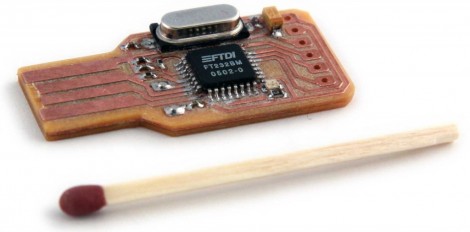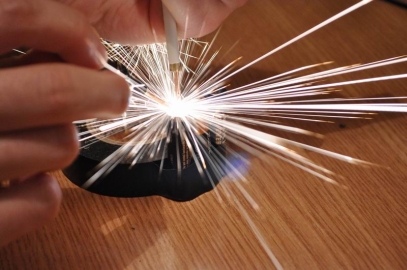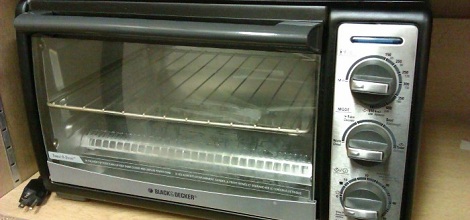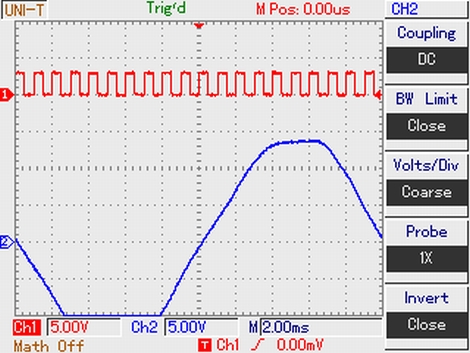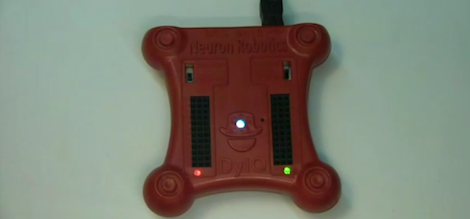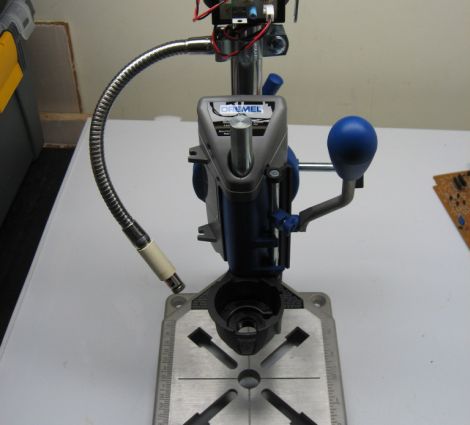
[Derek] was using his Dremel drill press to prep a bunch of PCBs, and found that it was getting difficult to focus on the spinning drill bit each time to line it up with the solder pads on the boards. He figured that a laser sight would help move the process along, but since no off the shelf solution was available for his press, he built one of his own.
He bought a cheap desk lamp with a flexible metal neck, which he disassembled, saving the flexible metal sheath. He installed a conduit clamp on one end of the neck, and a laser module at the other. [Derek] then mounted the laser arm on the press’ crow’s nest aiming it at the tip of the drill bit.
As you can see in the video below, the ability to easily position the drill bit using the laser helps him make quick work of any PCB.
Continue reading “Adding A Laser Sight To Your Drill Press In Just A Few Easy Steps”

